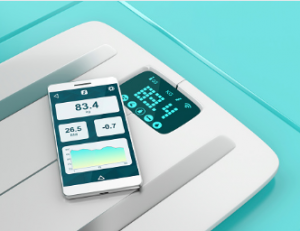A digital weighing scale is a device used to weigh things. Its display is simple and easy to read. Using one is as easy as lifting a pen cap. The accuracy of the device is excellent. In addition, the display is highly reliable and accurate. When storing the scale, you should step on it a few times to get a reference reading. It will help the weighing machine recalibrate itself.
Most digital weighing scales measure weight using an internal strain gauge. The gauge is made of a thin, flexible foil piece that conducts electricity. As you weigh yourself, the flexible surface bends and deforms, altering the flow of electrical current. It causes a change in the resistance level, and the balance changes its reading. Some other mechanisms translate the degree of deformation into the weight. So whether you’re weighing yourself or a loved one, an Instrument Choice digital scale will make the measurement.
 The main circuit board of a digital weighing scale is responsible for controlling its various components. It is powered by a three-volt coin cell battery and a sliding switch for changing modes. It also has four sensor inputs, namely two for weight and two for mass. The red wires represent the actual output from the load cells, and they connect to a female header on the main circuit board. It is important to remove all foreign objects before calibrating your scale.
The main circuit board of a digital weighing scale is responsible for controlling its various components. It is powered by a three-volt coin cell battery and a sliding switch for changing modes. It also has four sensor inputs, namely two for weight and two for mass. The red wires represent the actual output from the load cells, and they connect to a female header on the main circuit board. It is important to remove all foreign objects before calibrating your scale.
The circuit board controls the operation of individual components. A 3V coin cell battery powers the board. There is a slide switch for switching between the four modes. The scale has four sensor inputs. The red wires appear to be the actual output of the load cells. These wires connect to a female header. This connector connects to the main circuit board. The red wires should be connected to a power source. A three-volt coin cell battery must power it to calibrate a scale.
A weighing scale’s circuit board is its brain. It controls the individual components—the battery powers the display and controls the temperature and humidity. There are four sensor inputs on the circuit board. These inputs are located on either side of the weighing pan. The red wires appear to be the actual output of the load cells, but they connect to a female header. If there is a problem, the board is reset, allowing you to weigh the object again.
If you’re weighing a large object, you’ll need to calibrate the scale for accuracy. The weighing scale’s circuit board will contain the corresponding circuit boards for the individual components. These circuit boards will also control the underlying electronics depending on the model. A weighing scale’s battery will be powered by a 3-V coin cell. Its sensitivity will depend on how many sensors it has.
Instrument Choice digital scale‘s circuit board controls its components. It’s powered by a 3V coin cell battery and has a sliding switch for changing modes. The circuit board has four sensor inputs: a red wire represents the actual output of a load cell. This wire is connected to a female header, connecting to the main circuit board. However, it is important to keep the calibration of a weighing scale in mind as it can affect the accuracy of your measurements.
The weighing scale’s circuit board controls each component and is powered by a 3V coin cell battery. The circuit board has a sliding switch between the various modes and four sensor inputs. The sensors are connected to the circuit board via red wires. A red wire appears to represent the actual output of a load cell. These red wires connect to a female header, connecting to the main circuit board.
Instrument Choice digital scale circuit board controls each component. A 3V coin cell battery powers the circuit board. There are four sensor inputs on the board. These wires are connected to the main circuit board, responsible for reading the weight. In addition, the weighing scale’s weight is measured with a digital display. It also has a thermo-hygrometer, which can measure the temperature and humidity.
A digital weighing scale’s circuit board controls each component and is powered by a 3V coin cell battery. The circuit board also has a sliding switch to toggle between the different modes. The circuit board has four sensor inputs, including a red wire which appears to be the actual output of a load cell. These wires connect to a female header connected to the main circuit board. Once the battery is installed, the weighing scale is ready for use.
